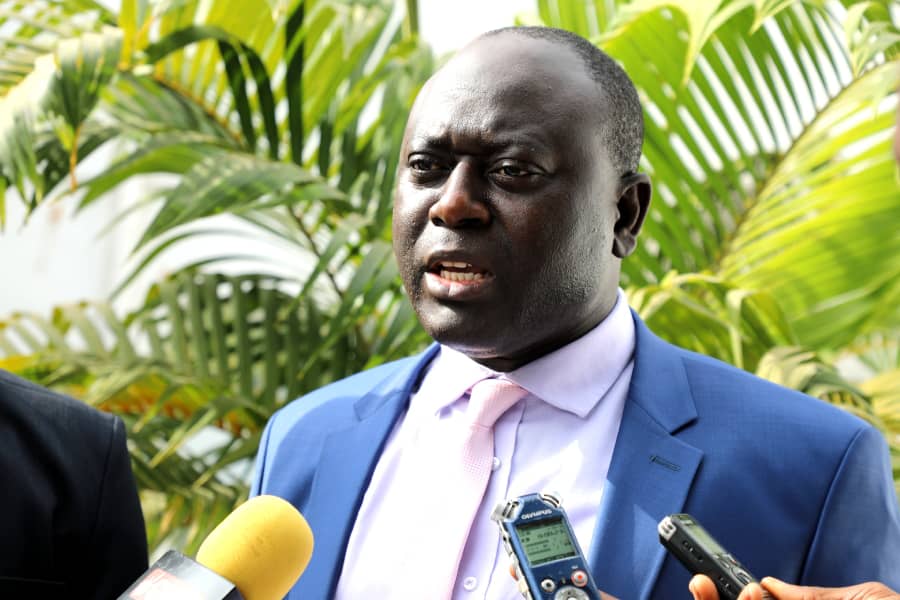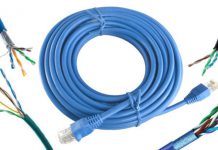2.69 According to GAMTEL’s draft unaudited Balance Sheet, as at December 31, 2017, GAMTEL has a positive Net Asset position and was solvent on a balance sheet basis.
2.70 The principal assets in GAMTEL’s 2017 Balance Sheet were Receivables at 53% of total assets (GMD 902m / USD 19m), and Fixed Assets (known as Property, Plant and Equipment) at 31% of total assets (GMD 533m / USD 11m). Its principal liabilities are Trade and Other Payables which represented 92% of total payables (GMD 371m / USD 8m).
2.71 Receivables have increased by approximately GMD 770m (USD 15m) since 2011 and ‘Receivables days’ (indicating the number of days on average taken to collect revenue) have deteriorated from 33 to 293 days over the same period. Our fieldwork indicates the balance contains a high proportion of Receivables that are not recoverable.
2.72 With the exception of 2016, Trade Payables have continually increased since 2012, by approximately GMD 200m (USD 4m), and payables days has increased from 63 to 283. GAMTEL has delayed paying its liabilities in response to the slower collection of Receivables.
2.73 From 2015 onwards, GAMTEL has increased its operating profit annually from GMD 21m (USD 0.5m) in 2015 to GMD 202m (USD 4.2m) in 2017, when the International Gateway revenue is included.
2.74 GAMTEL’s draft unaudited Balance Sheet as at December 21, 2017 is set out below.
Table 8: Draft unaudited summary Balance Sheet as at December 31, 2017
2016
(GMD’000)
2016 (USD’000)% of asset / liability total2017 (GMD’000)2017 (USD’000)% of asset / liability totalAssets Property, plant and Equipment620,36514,17540%532,76911,09831%Investments163,9813,74711%163,9813,41610%Inventory20,9814761%26,4075502%Receivables730,16416,68447%901,57018,78053%Cash and Bank10,3232341%85,8041,7875%Total assets1,545,81435,316100%1,710,53035,630100%[1]Liabilities
Borrowings due 31,170 712 7% after 1 year
34,590 721 9%
Borrowing due 39,181 895 8%
within 1 year
Trade and Other Payables352,9688,06575%374,4107,73691%Bank overdraft19,1674384%––0%Taxation29,2876696%––0%Total liabilities471,77310,780100%406,0018,457100%Net assets1,074,04124,536 1,304,52927,173
Source: GAMTEL’s 2017 Trial Balance; GAMTEL’s 2016Financial Statements. We applied exchange rates of GMD 43.764: USD 1 for 2016 and GMD 48.008:USD 1 for 2017. Therefore, the GMD depreciated by almost 10% between the two dates.
2.75 In December 2018, GAMTEL provided EY with a set of draft and unaudited 2017 Financial Statements, in Excel format. However, during our fieldwork in January 2019, we noted several inconsistences between the draft set of unaudited Financial Statements and the Access Accounting system downloads of the Trial Balance and General Ledger. We understand that these differences were mainly due to the posting of additional journals after the draft set of unaudited Financial Statements was originally produced.
2.76 We based our findings and results on the Trial Balance obtained in January 2019. Our ‘mapping’ of accounts from the Trial Balance was performed based on the original mapping provided in 2018, and based on prior years’ audited Financial Statements. It should be noted that the 2017 Trial Balance did not include any taxation liability accounts.
2.77 We received good cooperation and access to staff from GAMTEL during the Forensic audit. However, we experienced delays in receiving supporting documentation that was readily available to the Finance team (i.e. documentation stored in their offices). To date, we have not yet received all the requested documentation as set out in the various sections of this report. As at the end of our fieldwork on February 17, 2019, we were not yet been provided with a draft audited set of Financial Statements for 2017.
Financial impact of the issues identified
2.78 The approximate financial impact of the issues highlighted in our work to date are captured in the tables below, shown against the net equity position of the draft balance sheet as at December 31, 2017. Issues that cannot be or have not yet been quantified are explained more fully in the commentary:
Table 9: Financial impact of issues uncovered during the Forensic Audit
2017 2017
Brief description of issue (GMD’000) (USD’000)
Net Assets / Equity as at December 31, 2017
Section 1 – Adjustments that could be quantified (above USD 20k): 1 Write-off of CFD loan36,0007582 Write-off of RASCOM investment (2016)(25,593)(533)3 Impairment of GSM investment (GAMCEL)(93,833)(1,955)Section 2 – Adjustments that could not be quantified, however could be broadly estimated: 4 Removal of ‘GTMI Tuition Fee Arrears’ from overall entity Trial Balance(19,000)(396)5 Decrease WIP balance for GAMCEL’s portion of the ACEInvestment(14,900)(310)6 Provide for post-paid debtors over 360 days old(735,587)(15,322)7 Interconnection receivable should be fully provided for while approval from the Board is sought to write off the amount(388,000)(8,082)8 Provide for unrecoverable MGI receivables(21,000)(430)
Section 3 – Adjustments that cannot currently be quantified nor estimated, but likely to be above USD 20k:
9 Loss of International Gateway RevenueTBCTBC10 Write-off of specific unrecoverable post-paid receivablesTBCTBC11 Revision of the general provision for doubtful debtsTBCTBC12 Write off the GRTS intercompany balanceTBCTBC13 Remove the account 7440 “Stock take adjustment” and impair inventory balance for any damaged goodsTBCTBC14 Provide for unrecoverable staff loans balancesTBCTBCSuggested revised Net Liabilities / Equity following adjustments in Section 1 and Section 2 only42,616903
Significant findings
2.79 The significant findings arising from our Special Audit of GAMTEL as at December 31, 2017, which are explained more fully in the main GAMTEL section of the report, are summarized as follows:
Political uncertainty regarding the International Gateway (Financial impact table item 9)
► The International Gateway handles all incoming and outgoing international calls for networks within The Gambia. It is managed by a Gateway Manager, the mandate of which is to perform revenue assurance, collection and settlements for these international voice calls. Who acts as the Gateway Manager and/or is entitled to the revenues for international calls has long been subject to political interference which creates uncertainty for GAMTEL. The International Gateway has historically been a significant source of revenue for GAMTEL, although it has not enjoyed these revenues continuously.
► In 2017 approximately 50% of GAMTEL’s revenues on an annualized basis were from this source. Without these revenues GAMTEL would likely report a loss in 2017. Management’s view is that these revenues are critical to GAMTEL to fund investment for when the international call market is opened up to the market competition. Management’s budget for 2019 shows GAMTEL making a loss of GMD 172m (USD 3.5m) in the absence of International Gateway revenues.
► We understand that between 2006 and 2013 GAMTEL did not act as the Gateway Manager but did receive 50% of the International Gateway revenues, net of costs charged by the Gateway Manager.
► In September 2013, an Executive Directive issued by the Office of the President terminated this arrangement and henceforward required the revenues previously enjoyed by GAMTEL were instead paid into an International Gateway Account held at the Central Bank of Gambia.
► In July 2017, the new Government of The Gambia terminated the contract of the incumbent Gateway Manager, and instructed GAMTEL to take over the management of the Gateway. GAMTEL has remained the Gateway Manager since that time, incurring the costs of being the Gateway Manager. In November 2017, MoFEA instructed GAMTEL to transfer all International Gateway funds to the Central Bank of The Gambia. GAMTEL made a transfer of USD 2.5m (GMD 118m)[2] during February 2018, but has not made any subsequent transfers. The Board was advised that the correct procedure is for GAMTEL to submit these revenues to the Government’s account—and then for GAMTEL through its line Ministry, to separately make a case to the Government for any financial support that it requires from these ‘Gateway revenues’.
[1] Rounding difference noted of 1%
[2] Spot rate of USD 1:GMD 47,169 as on February 23, 2018
We understand from Senior Management that they have been instructed by the current Government of The Gambia not to use the International Gateway revenues that are GAMTEL’s retains.
► In response to this sequence of events, the External Auditors have required that International Gateway revenues should not be recognized in GAMTEL’s accounts.
GAMTEL has been given guidance by the Government to the same effect.
► Management should consider seeking consent to off-set the costs incurred as Gateway Manager from any further transfers of International Gateway revenues it is required to make to the Government.
Investments (GMD 164m, USD 3.4m / 10% of Total Assets) (Financial impact table items 2,3,5)
► Based on our testing, the carrying values of the majority of GAMTEL’s investments are overstated at December 31, 2017:
► An investment in RASCOM (GMD 26m / USD 533k) should be fully written off as the project has been dormant since at least 2016. Currently the investment is carried at its full investment cost; and
► The Global System for Mobile communications (“GSM”) investment (GMD 94m / USD 2m) is impaired as GAMCEL is not considered a going concern as at December 31, 2017 and should be fully provided against.
► In 2011, six Gambian companies[1] signed a joint agreement, which was brokered by the Gambian Government, to establish a public-private partnership (“PPP”) financing agreement for USD 25m (GMD 710m) through the vehicle of Gambia Submarine Cable Company Limited (“GSC Ltd”). The purpose of the partnership was to jointly contribute towards the cost of financing a landing station in The Gambia for the Africa Coast to Europe Submarine Cable (“ACE”), a submarine fiber cable laid from France through the coast of Africa to South Africa. In the agreement, GAMTEL and GAMCEL were each allocated 20% and 10% respectively of the cable capacity allocated to The Gambia.
► GAMTEL’s 2011 Financial Statements included a work in progress (“WIP”) balance of GMD 44m (USD 1.5m) and GMD 14.9m (USD 0.5m) that represented GAMTEL and GAMCEL’s respective shareholding in GSC Ltd. The GMD 14.9m (USD 0.5m) was paid by GAMCEL to GAMTEL via the intercompany account in 2010. The ACE landing station was completed and inaugurated in December 2012, where upon the GMD 44m (USD 1.5m) balance was reclassified from work in progress to investment in GSC Ltd. ► We noted the following:
► The balance of GMD 14.9m (USD 0.4m) ought to be in GAMCEL’s balance sheet, but it is not. We suspect that this balance has been incorrectly retained in GAMTEL’s work in progress but we cannot confirm this as Management was unable to provide us with a breakdown of its WIP.
► Both balances are recorded at cost but should be at fair value. The fair value ought to reflect the future revenues to be derived from GAMTEL’s and GAMCEL’s capacity entitlement.
► The investments for RASCOM, GSM and the balance with the Gambia Radio and Television Services (“GRTS”) should be written off.
► Management needs to analyse GAMTEL’s WIP balance and ascertain if it includes the balance of GMD 14.9m relating to the ACE investment. If it is not in WIP then Management needs to perform a wider balance sheet analysis to identify it.
► Management should perform a fair value assessment of the ACE investments as at December 31, 2017 for both balances of GMD 44m (USD 1.5m) and GMD
14.9m (USD 0.5m) that represented GAMTEL and GAMCEL’s respective shareholding.
Receivables (GMD 902m, USD 18.8m / 53% of Total Assets) (Financial impact table items
6,7,8,10,11,12,14)
► Post-paid debtors accounted for 59% of the total Trade Receivables balance as at December 31, 2017. Our testing suggests that the post-paid receivable balances are overstated:
► As at December 31, 2017, 88% of GAMTEL’s post-paid debtors are over 360 days old, totaling GMD 736m (USD 15m). It is unlikely that debts unpaid for such a length of time will be recovered and they should be provided against.
► We identified 1,383 debtor balances totaling GMD 353m (USD 7m) recorded as due from counterparties with “Gamtel” as part of their name. It is unlikely that these are third party receivables and in any event the balances are almost all more than 360 days old. These balances should be provided against.
► We discovered that GAMTEL has continued billing customers who have in fact closed their accounts and were no longer using GAMTEL services. We identified one such balance for GMD 17m (USD 354k) and upon enquiry Management notified us of an additional nine balances totaling GMD 31m (USD 65k) that arose in the same way. It was not feasible in the timeframe of our fieldwork to perform additional work to seek to quantify the totality of such balances and nor was the information readily available to do so, but there may be a significant number and value of post-paid debtor balances that arise from this error and are not genuine receivables. Management needs to ascertain the full extent of this issue.
► GAMTEL’s receivables include the interconnection fee (GMD 388m / USD 8m) due from GAMCEL. Due to GAMCEL’s declining financial position, it is doubtful that this amount will be recoverable and should be fully provided for.
► GAMTEL recognizes a receivable from MGI in the amount of GMD 21m (USD 430k). In light of GAMTEL’s difficult relationship history with this counterparty and the fact that MGI is no longer present in The Gambia and there is no ongoing working relationship with GAMTEL, it is doubtful that this account will be recovered, and it should be fully provided for.
► We understand that by way of an Executive Order, in approximately 1995, GAMTEL was requested to pay for the land, building and equipment to establish GRTS. GAMTEL records these expenditures totaling GMD 40m (USD 898k) as being recoverable from GRTS, but, given the passage of time in which no repayment has been forthcoming it is doubtful that this amount will be recovered and should be fully provided for.
► The trial balance shows Staff loans of GMD 3.5m (USD 75k) more than the underlying schedules. This amount is also unlikely to be recoverable. Furthermore, a significant portion of the staff loan balances with ex-employees are not being paid. Whilst GAMTEL has engaged a lawyer to seek collection, it is unlikely they will be recovered. These doubtful balances should be provided for, totaling GMD 12m (USD 255k).
► In summary, of the total Receivables recorded by GAMTEL as at December 31, 2017 of GMD 1,466m (USD 31m), approximately GMD 1,149m (USD 23m) appears to be doubtful.
► Management should reassess GAMTEL’s receivables as it appears to be overstated:
► GAMTEL’s post-paid debtors that are over 360 days old (GMD 736m / USD 15m are unlikely to be recovered and they should be provided against;
► The 1,383 debtor balances totaling GMD 353m (USD 7m) recorded as due from counterparties with ‘Gamtel’ as part of their name should be provided against as it is unlikely that these are third party receivables and in any event the balances are almost all more than 360 days old;
► Management should determine the number of balances whereby the billing department continued to bill the customer after the account was closed, and these balances should be written off as bad debt;
► The GAMCEL Interconnection receivable of GMD 388m (USD 8m) should be fully provided for as doubtful debt while approval from the Board is sought to write off the amount in GAMTEL’s financial records;
► Management should create a provision for doubtful debts greater than the required 2% per policy due to the significant ageing balance; and
► The provision should include both the GRTS and MGI balances, along with any other receivables that management consider to be doubtful (i.e., staff loans, unreconciled receivables).
Loans and securities (GMD 35m, USD 721k / 9% of Total Liabilities) (Financial impact table item 1)
► GAMTEL shows a liability of GMD 36m (USD 785k) comprising of a loan due to Caisse Centrale De Cooperation Economique’ (“CFD”). We have seen correspondence showing that the loan was in fact repaid by the Government in 2017 but that the Government has yet to determine if this payment is to be treated as a grant, shareholder contribution or an allocation of International Gateway revenues held by GAMTEL (either in which cases GAMTEL no longer has a liability of this amount) or as a new loan between GAMTEL and the Government (in which case GAMTEL would continue to have a liability of this amount).
► Our testing suggests that the CFD loan appears to be overstated:
[
The 2017 Trial Balance is reflecting a value of GMD 36m (USD 758k) for this loan, however Management provided correspondence to us that suggests that the loan was fully settled by the Government of The Gambia.
► While the balance of this loan should be reflected as zero, GAMTEL has not yet removed the loan from its accounting records as it is unclear whether the Government will treat their payment as a loan, grant, shareholder contribution or just Gateway funds utilized by GAMTEL.
► Management should obtain clarification whether or not the Government regards any amounts to be due from GAMTEL as a result of the repayment of the loan.
Executive Directives
► The Gambia Agricultural Marketing Company Limited (“GAMCO”) investment represents the total advances made by GAMTEL to GAMCO during the period 2004 to 2005. Management informed us that these advances were made following Executive Directives issued by the Ministry of Agriculture on behalf of the Government. These Executive Directives were issued in an attempt to facilitate the groundnut trade.
GAMTEL provided us with further examples of Executive Directives affecting its business, both at the strategic level and as regards to day-to-day operations, in the form of appointments, sponsorships and donations.
► During 2016, a waiver that was provided by the Government to exempt GAMTEL from paying taxes due to the Gambia Revenue Authority (“GRA”) was annulled. This resulted in GAMTEL owing the GRA an amount of GMD 354m (USD 7m) and was subsequently accounted for in GAMTEL’s Trial Balance.
Overstaffing
► We understand that GAMTEL, similar to other SOEs, is perceived as having an obligation to create social employment for the people of The Gambia and that attempts to downsize to tackle overstaffing could have political repercussions.
► During 2017, staff costs accounted for 38% of operating expenses. As at December 31, 2017, GAMTEL had 1,046 permanent employees. Of the total workforce, 25% of the employees were allocated as support services, which mainly consists of cleaners, drivers and security staff. A further 24% of the employees were allocated to customer services.
► Numerous members of management have informed us that, in their opinion, GAMTEL suffers from overstaffing. One commonly suggested solution would be to streamline GAMTEL so that it only retains core staff to perform its core functions, i.e., telecommunications. Management has floated the idea of outsourcing their Support Services such as security guards and drivers, claiming that this would remove some of the burden on GAMTEL and allow it to increase efficiency.
► We were also informed that “most” of the core departments are over-staffed. One director claimed that they had sent some employees on unapproved paid leave, without informing HR, simply to remove disruptive, unproductive staff and attempt to improve the efficiency of their department.
► A study published in July 2016 by consultancy firm Senghore Associates found that as at December 2014, GAMTEL employed 53% of the total staff of the Gambian leading Telecoms providers, more than double any competitor. Moreover, GAMTEL and GAMCEL combined employed 73% of the staff in the sector, at a time when they reportedly held a combined 21% market share.
Other findings
2.80 Other findings arising from our Special Audit of GAMTEL as at December 31, 2017, which are explained more fully in the following sections of the report, are summarised as follows:
Property, Plant and Equipment (GMD 532m, USD 11m / 32% of Total Assets)
► GAMTEL has encountered operational issues with their Fixed Assets management system and has since resorted to using a manual FAR, based in Excel. The Net Book Value of the FAR does not agree to GAMTEL’s Trial Balance at December 31, 2017 by GMD 15.5m (USD 323k) and does not provide a breakdown of any equipment classified as work-in-progress. Management are yet to satisfactorily explain the differences.
► Historically, assets on the FAR were not assigned an individual asset code. Instead they were grouped into one asset code, e.g. “5410 – GTMI Computers”. For most of these asset classes, no breakdown is available to ascertain the quantity and nature of assets in each code. Efforts have been made in the past two years to address this concern and it is now standard practice to assign every new asset a unique code.
Management should complete an overhaul of the current asset register by ensuring that all assets are tagged with a unique asset code, reflected in the FAR and are valued at the current Net Book Value. The FAR should be reconciled to the values for Fixed Assets in the Trial Balance.
Trade and Other Payables (GMD 371m, USD 8m / 91% of Total Liabilities) (Financial impact table item 3)
► Code Division Multiple Access (“CDMA”) Network Improvement accruals total to GMD 120m (USD 2m). These are two accruals for amounts due to Huawei in connection with the CDMA Network Maintenance and Improvement contracts. These CDMA accruals were raised in 2015 and no subsequent payments have been made to Huawei and no adjustments were made to these accounts. However, it was also noted that the Technical team responsible for CDMA were unaware of any obligation to Huawei. In these circumstances the accrual may not be required.
► GTMI is the training institution of GAMTEL and a division of GAMTEL. The GTMI Tuition Fee Arrears account (GMD 19m; USD 396k) represents when GTMI invoiced an amount GAMTEL for training provided to GAMTEL staff by GTMI. GTMI and GAMTEL agreed that the salaries cost that GAMTEL incurs for the GTMI staff should be offset against the invoices. As the invoiced amount is not equivalent to the salary cost, a difference accumulates. While a balance might be due between the divisions, it should not be included in GAMTEL’s entity level balance sheet as it is not recoverable from a third party. Moreover, this results in staff costs being understated on the Income Statement.
► The Finance and Technical teams responsible for CDMA should review the transactions to which these accounts relate to determine if GAMTEL still has an obligation to Huawei and, if not, release the account.
► Management should reverse the ‘GTMI Tuition Fee Arrears’ account from the overall entity Trial Balance.
Cash and bank (GMD 85m, USD 2m / 5% of Total Assets)
► Through our testing, we identified an account from Guaranty Bank with a description of “Dollar A/C:201-102593-2 4000-0 (Lc & Bc)” with a credit value of approximately USD 1m (GMD 54m). This account was not being reconciled. GAMTEL’s Finance team informed us that this account is a ‘sub-account’ to the main GAMTEL account and it was not being reconciled as it is a sub-account. GAMTEL began reconciliation of this account during our fieldwork.
► Management should ensure that GAMTEL performs full reconciliations of each of the bank accounts held by GAMTEL. Any reconciling items identified from the reconciliation of the Guaranty Bank USD sub-account as at December 31, 2017 should be addressed to ascertain if accounting adjustments are required.
Inventory (GMD 26m, USD 550k / 2% of Total Assets) (Financial impact table item 13)
► High value items such as fiber cables (GMD 6.4m / USD 133k) are being stored outdoors in an insecure manner. During GAMTEL’s stock counts, these cables are not measured or verified. For these stock items, the stock balance in the accounting system is used as the basis for the Financial Statements, without adjustment for any differences identified during stock counts.
► GAMTEL is holding stock in the stores that has water damage or deemed to be obsolete, despite GAMTEL being strained for capacity in these stores.
GAMTEL should consider reviewing the policy regarding inventory storage and stock counts (in particular, high value cabling) and ensure all valuable assets are kept in a secure, sufficiently-sized location, which protects the assets from the elements.
► Any obsolete items should be disposed of when removed from the stock listing.
In particular, Management should review the variances between the Trial Balance and stock listing records, remove the use of the “Stock take adjustment” account and adjust the records accordingly.






